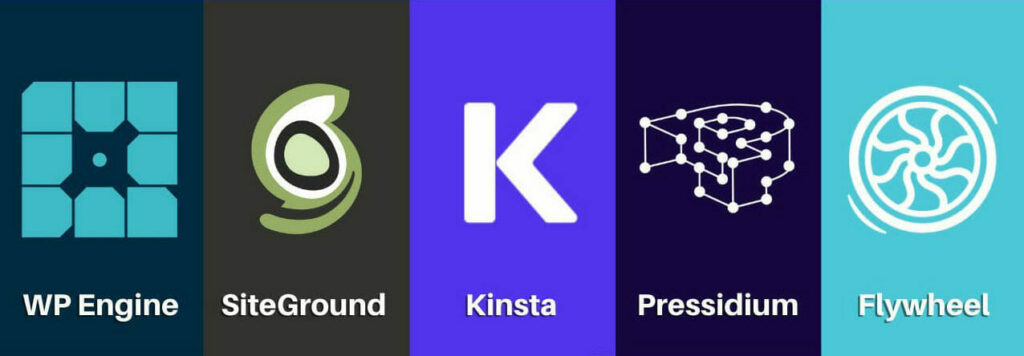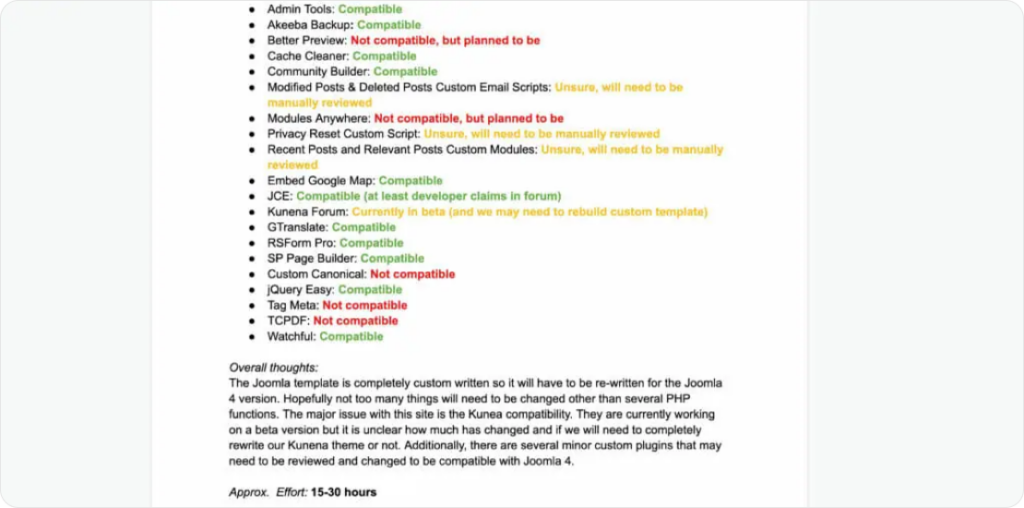
With Joomla 4 and 5 both out, website owners are starting to take a hard look at whether their website should prepare for a move to the upgraded Joomla platform or look into rebuilding the website in another content management system such as WordPress. At the time of this writing, Joomla 3 has already been retired so many organizations and companies have to start looking at what the budget will entail and preparing accordingly. To better answer this question, let’s start with what Joomla 4 and Joomla 5 bring to the table compared to Joomla 3. This is not a comprehensive list, but covers the major points that most website owners will care about:
- New Administrator Design: With Joomla 4, the backend admin panel has been redesigned with a left sidebar rather than the classic Joomla 3 top menu. A lot of effort and time has been made to improve the admin user experience. This will require some re-training by backend Joomla 3 admins.
- New Workflows: Joomla 4 includes a new workflows feature for admins to create custom content workflows in which a series of approvers and publishers can be set up in the flow, allowing your team to follow a standard content publishing process.
- Updated Media Manager: When editing in the backend, users now have a more modern and robust media manager to use that allows drag-and-drop multi-file uploading. Users can also crop, rotate, resize images, and more right in the media manager without any third-party plugin or having to edit in Photoshop / Canva before uploading.
- Email Templating Control: Admins can now manage and edit all emails sent out from Joomla to users right in the backend, a third-party plugin or custom code is no longer required. This may not seem like a huge deal but does provide more content control for non-technical backend users.
- Modernized Codebase and Developer Tools: The Joomla team has cleaned up and optimized much of the core Joomla code, ensuring developers can stay more efficient, ultimately encouraging better development practices, fewer bugs, and faster page speed.
- Better Core Security: Joomla has been updated to follow more industry-standard security practices, reducing the probability of future malware or hacks on your site. These new tools also encourage Joomla third-party developers to better secure their code moving forward.
- Improved Search Engine Optimization (SEO) Support: With improved SEO support, Joomla 4 websites are better structured to follow standard SEO semantics for crawling by Google and other search engines without requiring third-party plugins. Admins now have a huge amount of control over structured data, page titles, page descriptions, open graph data, etc. without any other software is necessary.
- Faster Page Loading Times: With Bootstrap 5 built-in, the frontend code is more lightweight and less likely to be dined by search engines for necessary page and site speed improvements. Plus a new lazy loading feature allows images to load as the user scrolls, enhancing the overall page speed score with Google Page Speed and Core Web Vitals out of the box.
- Accessibility (WCAG) 2.0 AA Compliance: Joomla’s backend interface and default frontend template are 2.0 AA Compliant which is a first for any major CMS. Note that any commercial or custom frontend template you use must still be built to support accessibility. Additionally, Joomla 4 includes an overlay-like accessibility plugin that can be enabled for users to control their own font sizes, contrast colors, cursor size, etc.
- Improved Smart Search: Joomla’s smart search functionality was already quite good, but now it has additional advanced filters and content mapping while automatically adding new content right into the search results without any web server configuration.
Now with that list out of the way, I am sure the question is does any of this really matter? Of course, this answer is dependent on your situation, but for most website owners, it may not. Joomla is a solid CMS product that still accounts for approx. 3.5% of all websites. With that being said, we can’t ignore the elephant in the room. Literally, a huge elephant on the world wide web, WordPress, accounts for nearly 43% of all websites on the Internet. I think many people would agree that you can build a very similar website in both Joomla and WordPress in terms of design, functionality, SEO, etc. But there are definitely preferences in terms of content management, backend UX, and agency and developer preference and support (most comments note WordPress is easier to build in and maintain content from the backend). This is where things can get a bit tricky. On paper, Joomla has many more functional features out of the box than WordPress. Precise SEO control? Check. Multilingual? Check. Content workflow management? Check. There are some use cases where Joomla is clearly a better fit. But WordPress is preferred by most of the end users and many developers, a lot of solid and enterprise-grade tools, development, web hosting solutions, and support have gone into WordPress that simply do not exist with Joomla. While WordPress does have its own demons and large changes going on with plenty of haters, it can’t be ignored. Even if you prefer Joomla, it is only responsible to look at if WordPress might be a better fit for your website upgrade process. So now back to the question, should you upgrade to Joomla 4 / 5 or move to WordPress?
To frame this, I would start by asking yourself, do you have large changes in mind for your website’s future? If so, this may be one reason to look into WordPress. With Joomla’s future dipping (although it may reverse with Joomla 5) and WordPress having only gained traction the past few years, there is some risk with sticking with Joomla. In risk, I mean that your organization may invest thousands of dollars into migrating to the latest Joomla and adding new functionality in the future then realize you are better off with WordPress in the coming years. To be clear, your website will not just stop working if Joomla development stalls, but we are looking for the best solution for your website with the data at hand.

The next question to ask yourself is what would a Joomla migration entail? This may require reaching out to your agency development team. They should be able to provide an audit of sorts in which they can go through piece by piece and provide an approximate effort to migrate to Joomla 4 or 5. This would involve providing the hours involved to update your template, your components and plugins. Many commercial Joomla developers already have Joomla 4 / 5 support, but others have decided to hang up the towel after Joomla 3 or your site may use custom a Joomla template or plugin that needs to be rewritten for Joomla 4 / 5 compatibility. If you website is not benefiting from something specifically in Joomla and the upgrade effort is significant for Joomla, it may be worth looking into the effort to migrate to WordPress at this time. Depending on the website it may even be cost-effective. This is why we are reaching out to our own Joomla customers now so we can make a coordinated and educated decision on what makes sense for their website and organization as a whole.

I know this guide may not have provided you with the answers you are looking for, but hopefully, it gave you action items to take on what is best for your organization and website. Overall, I expect Joomla will continue to stick around for many years, but a huge part of our work when choosing a technical platform for our customers is reducing risk and choosing the right tool for the job. With Joomla’s latest upgrades, it may be the time to re-assess why you or your agency chose Joomla originally and if that is still relevant today. It may be that Joomla still is the best platform for your organization, whether that is due to your website’s aspirations, budget, or other factors. Understanding the implications of whichever decision you make now though will ensure all stakeholders are on the same footing and your website’s future is bright. Don’t hesitate to contact us if you have any questions about Joomla and the next steps for your website
